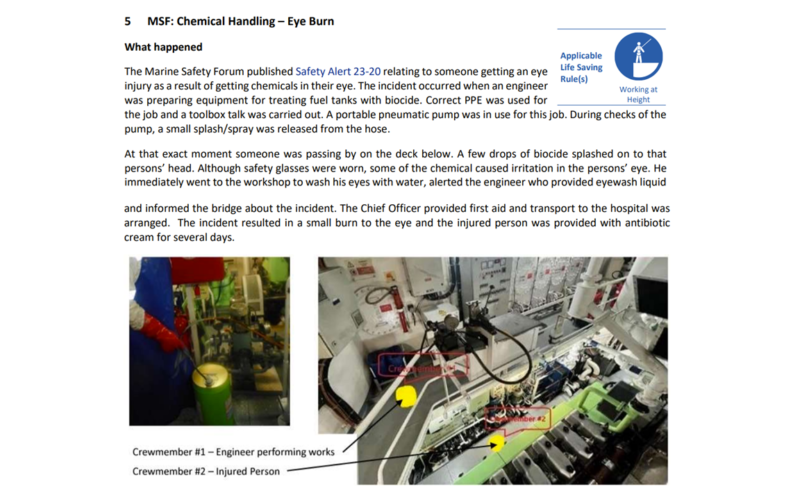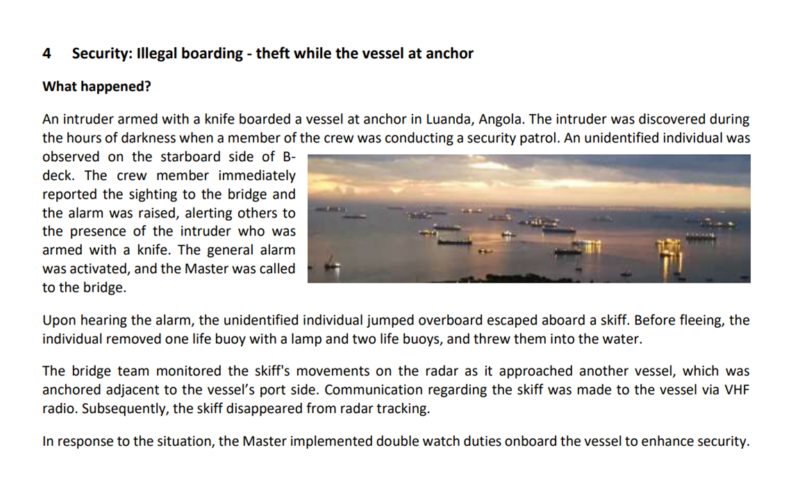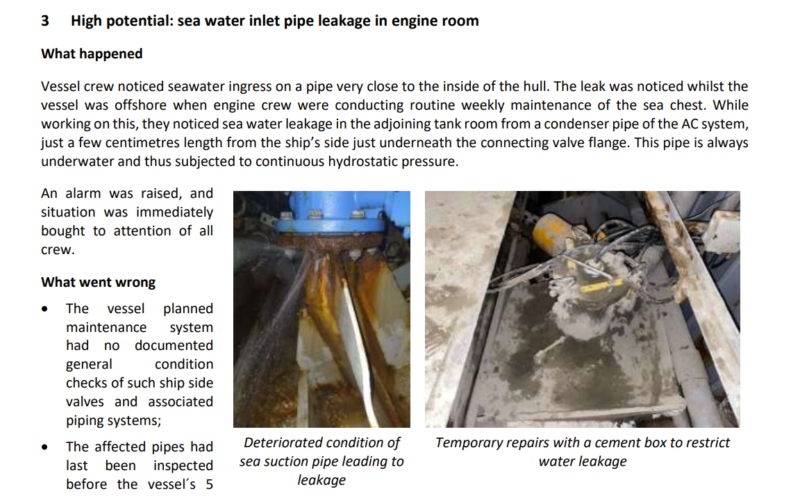Cause & Consequence
- Fire or explosion
Incident Location
Onshore construction/rig repair yard
Incident Activity
Any Activity Type
Incident Info Source
alerts@nopsa.gov.au alert
Specific Incident Equipment
N/A
Lessons Identified
The cause of the fire is believed to be radiant heat from an uninsulated and cracked exhaust bellows igniting the insulation in the deck head. The insulation was later found to be soiled (loaded with soot and hydrocarbons). The fire spread through the engine room and briefly flashed over to the engine room roof.Factors that caused the fire to escalate include:Availability of flammable material in the engine room, including hydrocarbon contaminated insulation and a wheelie bin. Main fire water pumps unavailable once the main generators were shut down. The fire in the engine room ruptured the rig-air line. The loss of rig air disabled the emergency fire pump's automatic air primer. It took over 2 hours to manually prime and start the emergency fire pump. The rig-air isolation valve for the engine room was in the engine room. Some portable fire extinguishers did not function. Factors that may have led to further escalation of the fire include:Bulk lube oil & hydraulic fluid were stored on the engine room roof - a brief flash fire occurred in this area before being extinguished by the support vessels water cannon
Incident Recommendations
Engine room fires are a very serious risk. Inspection and maintenance of exhausts, fuel lines, turbochargers & superchargers are critical, including the inspection and replacement of contaminated/damaged insulation. Housekeeping and cleanliness make a difference in reducing risk and damage. Provision and testing of emergency equipment is critical (in this case some CO2 cylinders did not activate when required and some portable fire extinguishers did not function). Redundancy in emergency systems can save lives. Consideration for facility specific common mode failures and escalation factors (in this case the rig air system). The role of stand-by vessels is critical. Highlights importance of emergency response for various scenarios. Practice makes perfect.
Rate this alert
Average Rating
Latest Alerts & Moments
Our searchable catalogue of hundreds of Safety Alerts and Safety Moments are all designed as learning resources that can help improve workplace safety.


